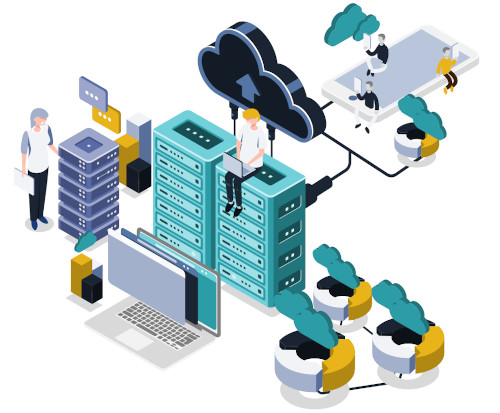FundsDLT has paved the way to cloud adoption in the fund industry. CIO Bernard Simon shared his experience at a recent PwC and Microsoft event entitled “Are you ready for Cloud Transformation?"
Financial services companies and fund industry actors are increasingly considering moving their IT infrastructure to the cloud. Recently the Luxembourg Stock Exchange, a FundsDLT shareholder, announced that it had become the first financial institution in Luxembourg to migrate its entire financial core system to the cloud.

Cost-savings, scalability and flexibility in IT infrastructure as well as vastly improved development and deployment of new and added-value services are among the advantages of cloud migration.
The cloud enables software as a service (SaaS), meaning ready-to-use software with the entire infrastructure stack, security and services required.
This is clearly what Europe’s investment fund companies and asset servicers are looking for in order to grow, create added value and future proof their businesses.
But what does such a move mean concretely? What about security and what are the challenges to consider?
To take the case of FundsDLT, which runs a unique combination of cloud and DLT and has a 100% cloud strategy, its architecture has three main dimensions: infrastructure (outsourced to a public cloud), applications and the working environment.
A public cloud and cloud-native applications
A public cloud, as opposed to a private or corporate cloud, is the most efficient and cost effective solution here. One point to keep in mind is that, in Luxembourg, migration to a public cloud requires filing to and approval by the regulator and will require an important number of security and operational assurances.
Fund actors could consider a full, direct outsourcing model, which means that their teams will be better able to focus on business applications and service. FundsDLT applies such a model, delivering software as a service to our clients. Additionally, as a result of its comprehensive cloud strategy, FundsDLT can also deploy their platform based on containers in a Microsoft Azure tenant of the client.
As concerns applications, they are best developed from the outset as cloud native and based on microservices and distributed database technologies to get the full benefits under this model.
Deploying applications though containers is important as this limits dependence on one cloud provider and ensures that they can be run in any environment, thus limiting the risk of being locked into any one cloud.
DLT and the cloud offer new ways to connect, collaborate, do business and build bridges between business processes.
Bernard Simon
CIO of FundsDLT
A new paradigm for the working environment, risk and security
Traditional security based around in-house perimeter hardening and enforcement simply does not apply where all data and processing is moved to a cloud environment and working paradigms are changed.
The working environment requires some thought also. Users need to be able access data and tools from anywhere, anytime and across multiple devices, which must be balanced with the need to protect an organisation and its assets.
The solution then is to introduce conditional access policies. In this respect, FundsDLT employs multi factor authentication for all users, specific mobile device management, strong endpoint security, encrypted network connections and various additional cloud and client security features.
How to offset and mitigate risk is a common question when considering cloud services. Reducing the risk of lock-in to one cloud provider, as noted above, is often a prime consideration. In addition to containerisation, this can be achieved through utilising open-source tools and services, managing IT infrastructure via Infrastructure as Code, and having secondary backup and archiving in external (non-cloud provider) data-centres.
In order to address all risks, FundsDLT has grouped its controls under 14 categories composed of 140 individual controls.
Finally, new ways of working and delivery require new levels of partnership. Embedding your clients in the design and development sprints and facilitating collaboration across internal and external teams is all part of the process.
Such a change enables continuous feedback, product iteration and deployment. Cloud migration enables companies to reach high standards of resilience at reasonable costs and combined with a high degree of flexibility and speed. These are distinct advantages of cloud services and which are much needed in today’s changing investment fund industry.



